#Café Procope
Explore tagged Tumblr posts
Text
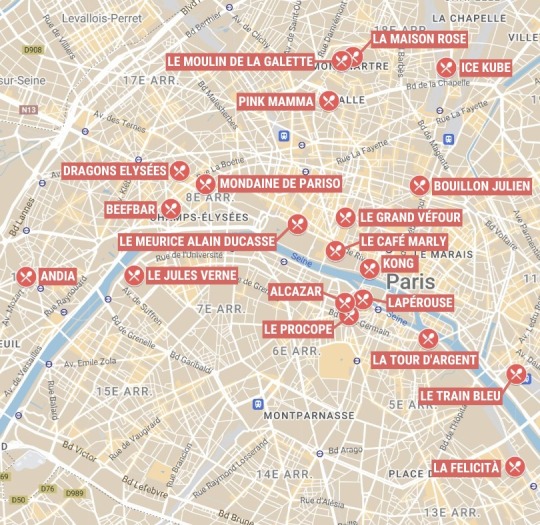
This is a map of the 𝗺𝗼𝘀𝘁 𝗯𝗲𝗮𝘂𝘁𝗶𝗳𝘂𝗹 𝗿𝗲𝘀𝘁𝗮𝘂𝗿𝗮𝗻𝘁𝘀 𝗶𝗻 𝗣𝗮𝗿𝗶𝘀! Each place is special—not just for its food, but for its amazing atmosphere.
From the historic Le Procope, the city's oldest café, to the charming Maison Rose with its iconic pink façade, these spots offer a unique dining experience. Whether you love classic or modern vibes, there's something for everyone to enjoy while discovering the best of Parisian dining!
32 notes
·
View notes
Text

18 hechos sobre París:
1. El Metro de París tiene varias "estaciones fantasmas" que ya no están en uso. Uno de los más famosos es el Arsenal, que fue cerrado en 1939.
2. El apartamento de Gustave Eiffel en la parte superior de la Torre Eiffel todavía existe. Ahora es un museo, mostrando cómo se veía cuando vivía allí.
3. Montmartre, conocido por su historia artística, tiene un viñedo oculto llamado Clos Montmartre que todavía produce vino.
4. La Ópera del Palais Garnier tiene un apartamento oculto diseñado para el arquitecto del edificio, Charles Garnier.
5. La casa más antigua de París se encuentra en la calle de Montmorency 51 y data de 1407. Perteneció al alquimista Nicolas Flamel.
6. La calle más corta de París, Rue des Degrés, tiene sólo 5,75 metros de largo y consiste únicamente en una escalera.
7. La Opera Garnier tiene un lago subterráneo, originalmente una fuente de agua natural que se convirtió en parte de su infraestructura.
8. Durante la liberación de París en 1944, la contraseña secreta era "Tante Sally. "
9. La Rue des Morts en el 5.o distrito fue una vez una calle donde personas con rostros desfigurados debido a lesiones de la Primera Guerra Mundial vivían y recibieron tratamiento.
10. La Campagne à París en el distrito 20 es un pequeño pueblo escondido dentro de la ciudad, con casas y jardines pintorescos.
11. El Tour Jean-sans-Peur, una torre medieval construida a principios del siglo XV, está escondida en el 2.o distrito.
12. Candelaria, un bar estilo bar clandestino, está escondido detrás de una tienda de tacos en Le Marais.
13. Le Procope, fundado en 1686, es el café más antiguo de París y fue frecuentado por Voltaire, Rousseau y Benjamin Franklin.
14. El Canal Saint-Martin estaba cubierto parcialmente a mediados del siglo XIX, y hoy en día, partes del mismo corren bajo tierra.
15. En el Arco del Triunfo hay un ascensor escondido dentro de uno de los pilares para los que no pueden o no quieren subir las escaleras.
16. El Pont des Arts fue usado una vez como un puente de peaje, donde los artistas montaban sus caballetes y pintaban las vistas del río.
17. Place de la Concorde, ahora una famosa plaza, fue una vez el lugar de muchas ejecuciones públicas durante la Revolución Francesa.
18. El río Bièvre, una vez una vía fluvial prominente en París, ahora fluye completamente bajo tierra a través de la ciudad.
18 notes
·
View notes
Note
Do you have any secret tips for restaurants or cafés for a trip to Paris?
Dear Paris Anon,
I am happy and amused you ask me this question. Happy, because I have been calling Paris home for six years: that means there are places where I was madly kissing a beautiful (and cruel) boy from Bastia, places where I walked at night drunk as a boiled owl with people who are still in my life, places where I regularly went shopping or having an endless coffee with friends and places I was entrusted with, like precious jewels. Amused, because to be honest, Paris is probably the last French destination I could think of for an enjoyable week-end en amoureux (I suppose you want to go as a couple?), right now: it is overpriced as hell (the Olympics are round the corner), dirty and seedy (I was shocked, last time I visited and Manu Macron, my old acquaintance of yore, spoke about parking all the homeless outside of town during the Games 'for aesthetic reasons' - the boy never had a sense of humor, trust me on this one).
I shall give you 5 restaurants and 5 cafés (oh God, why didn't you ask me about Bangkok, instead?). Many of them are on the Left Bank (all of my addresses were there, simply because the closer to the university, the better).
Five restaurants: as it happens in Rome (where the gap is truly tragic), I will try and recommend places where locals go. You will find a menu in English everywhere, but at least try the holy trinity of bonjour, l'addition (the check) et merci. All the Parisian waiters are sourer than the Politburo and insolent as highway robbers, but do not be deterred by their manners. Order away.
Le Relais de Venise - son entrecôte (271 Bd Pereire, 75017). It is not in the center. They do not take reservations. You will be met with a long line of people patiently waiting (Seinfeld style) to get in. They have a minimal set menu (which is always a very good sign: https://relaisdevenise.com/menus/set-menu.php). The waitresses are kind and dressed like 1920's maids. It will be the damn best entrecôte-frites you've ever had (their sauce is a secret). Nothing changed there since 1959. Double check opening times and plan accordingly: you will need a taxi and plenty of time ahead. Almost a bargain for its stellar performance. The London one is a sad spin off.
Le Soufflé (36 rue du Mont Thabor, 75001). An original choice, but oh so good! They only cook soufflés (not exactly a pudding, but a pudding angels must have on a daily basis). Very reasonably priced for Paris (set menus at 40 and 55 euros - https://www.lesouffle.fr/bienvenue/home/menu/). If you want to eat à la carte, I recommend le soufflé Henri IV (cheese soufflé with chicken & mushrooms sauce) : it is heaven.
La Jacobine (59-61 Rue Saint-André des Arts, 75006). You will find tourists in this one, it is always full. Service is impeccable. Do not bother with Le Procope round the corner: it used to be one of my haunts, but this is over. The best soupe à l'oignon (onion soup, notoriously hard to cook) I ever had (yes, they still add white wine!). I would also recommend the magret de canard sauce aux cèpes (duck breast with a porcini mushrooms sauce). I could not find a decent menu, but that should give you an idea - they don't have a website (https://eater.space/la-jacobine). Very reasonably priced, too - and very, very good.
Chez Julien (1, rue du Pont Louis-Philippe, 75004 Paris). This is one of my mum's favorites. It is open only in the evenings, but it is an excellent choice if you want to call it a night, because it has service continu (all night long, wow!). It is more expensive - this is, after all, the Right Bank, so expect prices to go drastically up. This is the only option serving wonderful breakfasts, so I beg you: have breakfast in town at least once, Paris hotels tend to do it on the sad and sorry side (https://www.chezjulien.paris/en/home#menu-en). Pair anything you pick with a glass of Pouilly fumé white wine (it goes with anything, it is that magically good).
Money is no object? Entice the guy to take you at (I am torn, here, to be honest) La Tour d'Argent (19 Quai de la Tournelle, 75005). It is very expensive (like VERY), but it is worth every penny (https://tourdargent.com/wp-content/uploads/2023/09/LTDA-SEPTEMBRE-EN.pdf). You must (it's an order!) order the canard au sang (you will find it on the menu under the entry Duckling Frédéric Delair and it is outrageously priced). But you will never have a chance to see the table show anywhere else (it is served in two times: first the fillet and then the legs and it uses a sort of Medieval contraption, to get the blood out for the sauce) - just a specialty from Normandy, you will not find in Rouen anymore. It is divine. They have been there since 1583. What are you waiting for? (for a less break the bank option, try Le Grand Véfour, near the Louvre - google it, it will take forever to explain why).
Four cafés and a salon de thé (tea parlor) : all are haunts of mine. In every single one of them something very personal happened to me. Consider yourself lucky. On a more practical side, all of them double as excellent lunch options, for a fraction of what you would spend in a restaurant. :)
Chez Carette (4 Pl. du Trocadéro, 75016, but also Place des Vosges, with a nod to C). You will have an exceptional choice of anything you could think of and the same Roaring Twenties atmosphere as in the Relais de Venise restaurant. The chocolat chaud (hot chocolate) is almost perfection (do NOT go to Angelina, on the rue de Rivoli, that is another favorite which went south and not in a good way). The best macarons you will find North of Saint Jean de Luz's Maison Adam (where the story of macarons began in earnest). This is Someone's favorite, but then he always was a Right Bank purist. Service is old school, which means supremely kind, if only a bit on the slow side: you are in France, soak it in!
Les Deux Magots (6 Pl. Saint-Germain des Prés, 75006). On the Left Bank in the publishing houses district. This is my second favorite (there is a first favorite) and you will likely find me on the heated terrace with a cigarette and a newspaper, if I were there. Service is appalling, but you should not mind, I have warned you. Reasonably priced for what and where it is. Breakfasts are mediocre, but still enjoyable and lunch/dinner menus are typical brasserie fare - you are not there for the food, you are there to cosplay Jean-Paul Sartre and Simone de Beauvoir and act intellectual and sophisticated and have endless talks about the world's destiny (https://lesdeuxmagots.fr/en/breakfast-menu/). If nature calls, head downstairs with an air of intrinsic superiority and don't forget to pay the grumpy dame pipi (toilet lady), who will give you what you need and look at you like you are the scum of the Earth. Always makes me laugh.
Le Café de l'Epoque (2 Rue du Bouloi, 75001). On the Right Bank, at the end of one of the most beautiful passages couverts (glass-roofed passageways) of Paris. Again, you are there for the supremely dreamy atmosphere, I can only fail to describe. Look on the map for all of these passageways and then get lost in the maze of stamp shops, bookstores, taxidermists and God only knows what else you could think of (or at least add to this passageway the Galerie Vivienne). Usual brasserie/bistro fare, reasonable prices (https://cafedelepoque.fr/en/services). The lemon meringue pies are to die for.
Café Le Rostand (6 Pl. Edmond Rostand, 75006). Steps away from the Luxembourg Gardens, which I crossed every single day to go to the uni. Steps away also from the secret and sublime Medici fountain in above park (oh, the things I did there!). Surprisingly good French fare, the beef tartare is excellent (a rare thing!) and well priced (https://lerostand.fr/carte/ - use Google translate, they don't care for tourists). Service is cheeky. Round the corner, one of the most charming shops in Paris, Parapluies Simon (56 Boulevard Saint-Michel, 75006) - only umbrellas and dandy walking sticks (you can hide a whisky mini flask in one of them, I am told by Someone on the phone, but I think he is trolling us - we love that shop).
The Tea Caddy (14 Rue Saint-Julien le Pauvre, 75005). It's been there since 1928, when a certain Miss Klinklin opened it and introduced the Devon scones to France. It is my favorite favorite (https://the-tea-caddy.com/en/tea-room/) and it is perfect on a rainy day. Steps away from the Medieval church of Saint-Julien-le-Pauvre, one of the most authentic and moving experiences of its kind in a very secular town. The Shakespeare & Co. bookstore is just round the corner. A rare gem of a place.
I could go on and on and on. Three more short tips and you will thank me for it, as alternatives to deceiving mainstream options:
The Musée de l'Orangerie instead of The Louvre. Blasphemy? Intense perfumes come in small bottles. It is breathtaking (https://www.musee-orangerie.fr/en).
Château de Rambouillet instead of Versailles (you will not be able to enjoy it AT ALL). Where else could you find Marie Antoinette's private 'milk bar' (La Laiterie de la Reine/ The Queen's Dairy), a supremely elegant affair, with milk-spouting fountains, built to encourage hygienic milk consumption as an alternative to breast-feeding (she was unable to). Trust me and plan a full day for it (https://www.chateau-rambouillet.fr/en/discover).
La Sainte-Chapelle instead of Notre Dame. I always preferred it to anything else, except perhaps Vézelay (far, far away from Paris). It will shock you, but in such a perfect way (https://www.sainte-chapelle.fr/en). Enough said: I will let you discover. Across the Seine, couple this visit with the Musée de Cluny and tell The Lady and the Unicorn I miss them (https://www.musee-moyenage.fr/en/).
I am not sorry for the length of this post. At all. I hope you will enjoy this modest, but very personal selection and perhaps you will come back and tell me if it was worth something. Bon voyage!

Notre Dame on a snowy evening, Paris 1953
49 notes
·
View notes
Text
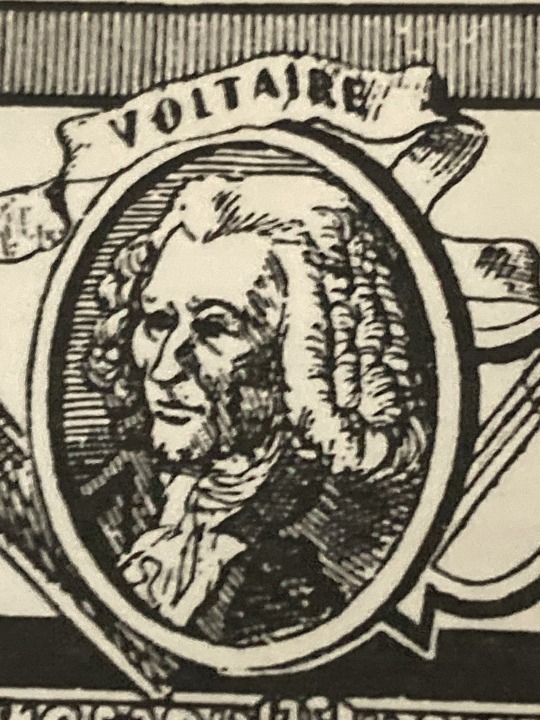
Demon Zozo from a 1968 Café Procope postcard

19 notes
·
View notes
Text


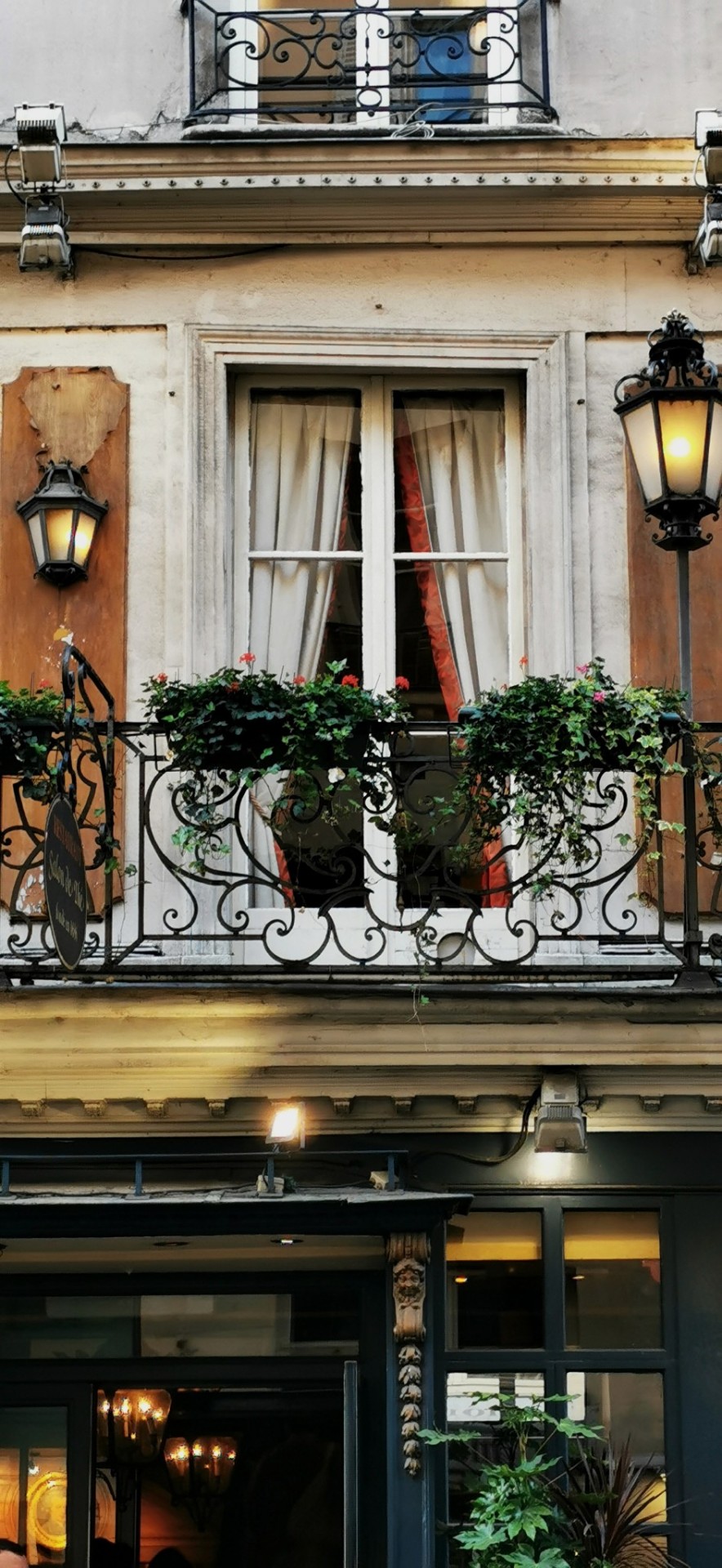
The Café Procope in the Rue de l'Ancienne Comédie is a café in the 6th arrondissement of Paris. It was opened in 1686 by the Sicilian chef Procopio Cutò (also known by his Italian name Francesco Procopio dei Coltelli and his French name François Procope) it became a hub of the Parisian artistic and literary community in 18th and 19th centuries. It sometimes is called the oldest café of Paris in continuous operation;however, the original café closed in 1872 and did not reopen as a café until the 1920s, so the claim of "oldest café in continuous operation" is not entirely true.
Marie Antoinette and Napoleon are known to have frequented the restaurant.
41 notes
·
View notes
Text

Le Procope, established in 1686, is Paris’s oldest café and a storied landmark in Saint-Germain-des-Prés. Once frequented by Enlightenment thinkers like Voltaire, Rousseau, and Diderot, it became a hub for revolutionary ideas with figures like Robespierre and Marat. A taste of Parisian intellectual heritage.
2 notes
·
View notes
Note
What happened to Camille in the immediate aftermath of the Champ du Mars ? I know Danton went to England , but I’ve heard Camille stayed in Paris…if so why was he not arrested, or were the threats less serious than they seemed ?
On the evening the same day as the massacre we find Camille at the Jacobin Club:
M. DESMOULINS — I would not like it to be said in any circular writing that we are in split with the National Assembly. Certainly, where MM. Robespierre and Pétion are, there is no split with the National Assembly. As for sending your address by post without using the Assembly's countersignature, I must warn you that, for six weeks, none of my numbers have been received in Marseille; and yet I sent more than twelve hundred, for which I have receipts from the post office.
Five days later, the the Moniteur could report that the journalists Suleau and Verrières had been arrested, and that the authorities had also fruitlessly gone looking for Fréron, Legendre, Desmoulins and Danton, the latter three, the journal assures, having already left Paris. In Camille’s case, we know the place he, together with Fréron, fled to was Lucile’s parents country house at Bourg-la-Reine:
You (Fréron) know my father-in-law, Citizen Duplessis, a good commoner and son of a peasant, blacksmith of the village. […] An old clerk’s wallet, which had been discarded, forgotten above a cupboard in a heap of dust, and which he had not touched or even thought about for perhaps ten years, and on which they managed discovered the imprint of a few fleur-de-lis, under two fingers of filth, completed the proof that citizen Duplessis was suspect, and thus he was locked up until the peace, and seals put on all the gates of this countryhouse where you remember, my dear Fréron, that we both found an asylum which the tyrant dared not violate after we were both ordered to be seized after the massacre of the Champ-de-Mars. Camille in number 4 of the Vieux Cordelier (December 24 1793)
At that time, if you (Camille) remember, you were incognito in Paris. You said then that you were in Marseille, in the land of liberty, the only place where one can speak the language of truth. This was not very true, as you know, because while you were believed to be in Marseille, you evaded the pursuits that were being made for the affair of the Champ de Mars, in the gardens of your father-in-law, two leagues from Paris. I, however, remained at my post, and I defied the accuser Bernard, and I entrusted you with my protection, brave Camille, in your little secret journeys from what was formely known as Bourg-la-Reine. Révolutions de Paris by Prudhomme, number 188 (February 9 1793)
In number 34 of Gazette des nouveaux tribunaux (August 26 1791) Camille was accused ”of having made incendiary remarks at Café Procope café, of having provoked murder, saying that it was necessary to shoot the national guards, and that the assignats were the heritage of the workers of the charity workshops.” This was however only based on a petition that may or may not even have been written by Camille that didn’t contain any calls to arms or violence whatsoever. Because of this, the charges against him were dropped, and on September 3 we find Camille presenting himself at the National Assembly to stand for election to the Legislative Assembly. On October 7, he gets mentioned as taking part in the debates at the Jacobin club once again, after more than two months of silence. The same month he could also release the eighty-sixth and final number of Révolutions de France et de Brabant, which had been unable to appear for almost three months (number 85 having been released on July 18, the day right after the massacres). In it, Camille blamed Lafayette for having forced an end to his career as a journalist.
14 notes
·
View notes
Text
𝟭𝟴 𝗳𝗮𝗰𝘁𝘀 𝗮𝗯𝗼𝘂𝘁 𝗣𝗮𝗿𝗶𝘀:










1. The Paris Metro has several "ghost stations" that are no longer in use. One of the most famous is Arsenal, which was closed in 1939.
2. Gustave Eiffel's apartment at the top of the Eiffel Tower still exists. It's now a museum, showcasing how it looked when he lived there.
3. Montmartre, known for its artistic history, has a hidden vineyard called Clos Montmartre, which still produces wine.
4. The Palais Garnier Opera House has a hidden apartment designed for the building's architect, Charles Garnier.
5. The oldest house in Paris is located at 51 Rue de Montmorency and dates back to 1407. It belonged to the alchemist Nicolas Flamel.
6. The shortest street in Paris, Rue des Degrés, is just 5.75 meters long and consists solely of a staircase.
7. The Opera Garnier has an underground lake, originally a natural water source that became part of its infrastructure.
8. During the liberation of Paris in 1944, the secret password was "Tante Sally."
9. Rue des Morts in the 5th arrondissement was once a street where people with disfigured faces due to World War I injuries lived and received treatment.
10. La Campagne à Paris in the 20th arrondissement is a small, hidden village within the city, complete with quaint houses and gardens.
11. The Tour Jean-sans-Peur, a medieval tower built in the early 15th century, is tucked away in the 2nd arrondissement.
12. Candelaria, a speakeasy-style bar, is hidden behind a taco shop in Le Marais.
13. Le Procope, founded in 1686, is the oldest café in Paris and was frequented by Voltaire, Rousseau, and Benjamin Franklin.
14. The Canal Saint-Martin was partly covered in the mid-19th century, and today, parts of it run underground.
15. At the Arc de Triomphe, there's an elevator hidden within one of the pillars for those who can't or don't want to climb the stairs.
16. The Pont des Arts was once used as a toll bridge, where artists would set up their easels and paint the river views.
17. Place de la Concorde, now a famous square, was once the site of many public executions during the French Revolution.
18. The Bièvre River, once a prominent waterway in Paris, now flows entirely underground through the city.
Pictures by me and Infomation from https://www.facebook.com/share/p/xCvErckZJgqo7x8P/
5 notes
·
View notes
Text
French Kiss: Tale of the Revolution, Ch. 20: Happy Endings
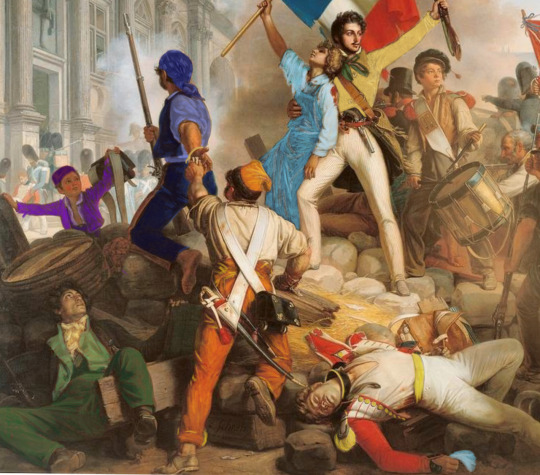
Colorized version of Fighting at the Hotel de Ville, 28th July 1830 by Jean Victor Schnetz. (embedded image description)
Prev - Happy Endings - Masterpost - [ AO3 ]
Summer, 1830, Café Procope
Virgil leaned forward, elbows on the table, and he watched, eyes wide, as the bearded man took a long draw on his coffee. “Then what happened? Tell me, did Patton and Remus free them? Did they… did they go back for Logan’s body? Maybe… maybe he was really still alive?”
The bearded man’s eyes shot over to the bartender, but his back was turned to them.
“Patton didn't slept at all that night,” the bearded man shook his head. “Remus tried, if for no other reason than to mollify him. And to…" He lowered his voice. "Give him a little privacy while he grieved." The bartender faced the other side of the bar, studiously busy polishing a beer stein. The bearded man cleared his throat and nodded. "At first, Remus imagined making his way back to the palace, fighting and sneaking his way past the rebels, convincing the guards he was who he said he was, and breaking in to free his love and his brother.”
He drank more of his coffee. “But as the night wore on, the fires at Versailles grew brighter. And his hope dimmed.”
15 July 1789
Patton stirred at the first hint of pink along the horizon. “Your���Remus?” he whispered, moving closer and resting a hand on Remus’ shoulder. “Are you awake?”
“Yes,” his voice cracked. Patton was on his feet, stomping dirt into the embers. Remus scrambled up after him. “The horses stayed,” he murmured.
“Petit and Naif are good horses, aren’t you?” he cooed, scritching across the shorter one’s back before strapping down his saddle.
“So you’ll take Petit,” Remus copied his movements and buckled the other saddle. “And I’ll take Naif?”
Patton chuckled dryly. “Petit’s the taller one. You’ve got her now." He stroked Naif's mane and his voice went soft. "Logan used to pretend he didn't like that joke.” He dragged his hand across his face and watched the sun inch her way over the horizon. Remus lifted his hand, about to grip his shoulder or… Do something. Anything. Anything to cut through the blanket of grief wrapped around the other man.
But Patton straightened and pointed to the thinnest part of the trees. “We’ll head that way on foot, then see how the road looks.” He nodded and clicked his tongue. Both horses followed him. “With any luck, we can ride most of the way.”
~~~
The City of Light burned.
Black, oily smoke billowed from the Bastille and several of the larger estates along the far shore of the Seine. The tall, windowed doors of St. Germaine were barred with a crooked iron brace. There were scorch marks on the doors and more on the loose pages from the prayer books gathered in clumps along the gutters.
They walked the horses slowly, and Patton clucked soothingly when a loud bang sounded north of La Chapelle. “Welcome to Paris,” he murmured to Remus. The bright sunshine illuminated every cracked window, every pile of trash, every dirty puddle. Every beggar. Patton took them past du Foy, but Remy had boarded up the windows and was likely hunkered down inside, his stolen musket by his side, lead pipe in his hand. Remy had told him stories of the food riots in the '70s, and he was not the type to take chances after that.
A rumbly wave of voices spread out from the center of the city and they followed the noise. A large gallows had been assembled in the middle of Jardin Square. The air was thick and acrid with the fires dotting the city and July’s heat already rising up from the cobblestone streets. The memory of the forest's cool air and the babbling creek seemed unreal.
The gallows platform was empty save for a pair of rebels fastening nooses to the heavy beam. Either end was rough and splintered, probably plundered from one of the estates before the structure was torched. “Look,” Remus tugged at his sleeve and his eyes darted over to the floor of the gallows. It was built tall, with the stage higher than eye level. “There are trap doors.” Patton looked and under each rope was a jagged square. “If we can stop those from triggering, it could buy us time to cut them down.”
Patton nodded. “Let’s tie off the horses, then cover me while I get under there.”
Less than an hour later, Patton and Remus mingled with the crowd at either edge of the gallows, mere paces from the steps leading up to the stage. The moment the doors failed to open, they would rush up, clad in red scarves, and promise to help. They had to be fast, and cut the ropes before anyone else could reach them.
They had one shot.
Remus fidgeted, his curls, even dirty, bouncing as he shifted. He jumped when someone clapped his shoulder, laughing. He laughed along and said something Patton couldn’t decipher from the other end of the stage. A little boy beat out a steady rat-tat-tat on a dented drum and the crowd’s volume grew. The mass of people moved as one, breathless and faces bright with excitement. One of the Garde Royale emerged from the commandeered shop behind the gallows. His uniform was torn, epaulets ripped from the shoulders and a deep purple bruise covering one eye. The crowd jeered as he was led to the end closest to Patton and two students he recognized from the café tightened the noose around his neck.
More boos erupted from the men and women and children gathered around the stage. Janus stumbled out, eyes downcast and his hands tied in front of him, like the guard. He didn’t appear to be in as bad of shape, but he favored his left leg as he walked and he moved far too slowly. Remus’ eyes were fixed on him and he inched a little closer to the steps.
“Not too soon, Your Majesty,” Patton whispered under his breath, willing Remus to remember to wait.
Patton didn’t think the crowd could get louder but a flash of green drew a roar from the mob. A head taller than the men leading him, Prince Roman walked with shoulders squared and chin tilted up. If it weren’t for the split, bloodied lip and his blood-matted hair, he could have been making his entrance at a grand ball. He didn’t react when one of the men tried to trip him, catching himself before falling on his face, arms tied behind his back, one final loss of freedom they could inflict before at last taking away his life.
From where he stood, Patton could see the lever that was meant to open the hatches. Beneath the stage, he'd jammed thick cedar shims into the mechanisms, his sabotage invisible from the outside. The lever would work, but the hatched would remain closed just long enough for him and Remus to cut everyone down.
The drums intensified, riling up the crowd until there was a crack of gunpowder and the executioner pulled the lever. When the hatches didn’t open, panicked voices rose up from the students who’d squeezed through the crowd to get a better view of the hanging. They were now penned in, caught between the head-high hanging platform and the growing mob.
It was now or never.
Moving as one, Remus and Patton dashed onto the stage. Before Remus could reach his brother, the shim splintered and the hatch dropped beneath his feet. Remus shouted, a wordless, panicked cry, as he dragged Roman back up and began to hack at the rope. While that was going on, the guard had managed to wiggle one hand out from his ropes and freed himself before he abandoned his distinctive coat and jumped off the back of the execution stage. The crowd was stunned, and time seemed to stand still as Patton ran to Janus’ side.
With all eyes on the “King,” he sawed through Janus’ ropes and half ushered, half carried him to the other end of the stage. “Trust me,” he hissed at the twins, then ripped open Roman’s tattered green coat and shouted, “Everyone! Faites attention! He’s wearing red! The King’s a fraud, he’s just a guard." He pointed behind the stage, away from where the guard had escaped. "That man was the King!”
The mob roiled around them, a bubble waiting to pop. As they moved down the ladder, Remus spotted a familiar young woman dressed in rags, clutching her elderly grandfather’s arm. Her rough woven skirt and apron, stained and threadbare blouse looked like anyone else's but he knew that face. Relief flooded his heart and he almost smiled. Philomene! She’d gotten out and taken Maitre with her. She met Remus' eyes, bowed her head, then stepped in front of a rebel attempting to get to the stage. She grabbed his arm, speaking quickly and pointing to Maitre.
“Get to the horses while they’re distracted,” Patton ordered, pulling the princes along. He squirmed through the crowd as they pushed their way around the stage, hunting for the long-gone guard. Dirtied and bloodied, friend and foe, royalty and Jacobin all looked alike and they managed to get to the edge of the square where Petit and Naif nickered nervously.
“You found me,” Janus slurred once they’d stopped, hanging from Remus’ arm.
“Of course I found you, mon douceur,” he murmured and lifted Janus up into the saddle before climbing up behind him, one arm wrapped around his love’s waist, the other hand tight on the reins. “I promised you, ‘til my last breath and beyond.” He nuzzled gently against the side of his neck, shoulders trembling. After a moment, he straightened and turned toward the others. “Race you, brother,” he started to laugh, but it came out more like a sob at the sight his brother’s bruised and bloodied face.
“If you think I’m going to let you win merely because you saved my life,” Roman’s smile was weak but real as he mounted the other horse behind Patton. “You’re dreaming.”
Patton chuckled at the brothers’ banter and tugged on the taller man’s arms. “Hold on tight, Your Highness” he muttered.
“Mon héros petit,” he said quietly, both arms looped tightly around Patton’s waist. He looked over his shoulder when the sound of the mob changed. Someone in the crowd pointed their way, and the mob seethed, undulating toward them like some giant sea creature.
“We need to move,” Patton said, clicking his tongue at the horses. “Now!”
Urging Naif and Petit into a gallop, the four of them took off just ahead of the crowd, leaving the chaotic mob in their horses’ dust.
Summer, 1830, Café Procope
“Mon dieu,” Virgil murmured. “They made it?” Tears pouring freely down his cheeks, he accepted a handkerchief from the bearded man. He scrubbed his face dry and shook his head. “That was a beautiful story, monsieur. Thank you.” He swallowed hard and nodded. “Where are they now? The stories say they—”
“Last I heard, the four of them were still guests of King Fredrick in Berlin.” He shrugged and finished his coffee. “Exile beats death.”
Virgil tapped the sides of his cup and leaned forward, eyes drawn to the gun the bearded man still held. His gun. “Did Patton ever return to Paris to seek revenge? To find… um… Raúl?" He stared at his gun with hardened eyes before looking up at the bearded man. "Make him pay for killing Logan?”
Shaking his head, again the bearded man gazed out at the bartender working his way through his closing tasks. The bar counter gleamed in the lamplight, every glass shone, bright and glossy. Just like the bartender’s clear blue eyes. “Patton was never the type to hurt someone out of revenge.” He returned his attention to Virgil. “Besides, they all knew Logan wouldn’t’ve wanted that.”
The dark fire that had filled Virgil’s eyes faded, and the coffee had sobered him. He stared down at the table for a long time, rubbing his hands over the scarred but polished surface. Finally he looked up and jerked his chin toward the gun. “I listened to your story, monsieur.” He bowed his head and pulled the ring out from under his shirt. He kissed it, then left it out, hanging just over his heart. “May I have my gun back now?”
“How about…” Picking up the gun, he opened the chamber and knocked the three bullets it contained into his palm. “You keep your gun, and I keep your bullets.” He offered Virgil the revolver, handle first. “Fair?”
Virgil chewed on his lip then finally nodded. “Entendu. Fair.” His mouth regained a bit of the shaky smile he’d had at the end of the bearded man’s story. He accepted the gun and, after a moment, tucked it in his belt. “Good night, monsieur. Thank you for the coffee and… the story,” he said, uncertain, like he’d pushed and pushed and pushed at a door only to have it fling open when pulled. He gave the bartender a little two-fingered salute then slunk out into the night.
The bartender followed and locked the door behind him before lowering the shade. Smiling with a faraway look in his eyes, he filled the bearded man’s cup with the last of the coffee. “You gave ‘Patton’ a larger role in the rescue tale this time.” As he turned to extinguish the lamps at the next table, the flames cast golden light over the bartender's unruly mop of greying hair, momentarily restoring his formerly blond curls.
The bearded man smiled sadly at him.
“He deserves it. Roman was right. The little kitchen scullery was a hero that night.” He took a long drag of his coffee, relishing the way the hot, bitter brew scalded his throat. He set down the mug and wiped his mustache with the back of his hand. “Saved His Majesty’s life.”
The bartender nodded. “It’s too bad I couldn’t save you both. That I couldn't save you all.”
The bearded man rubbed the edge of Janus’ gold ring, back on his pinkie where it had been the night he’d given to him. “You did what we all did that night, Pat,” he shrugged, leaning over to extinguish the last light. The lamplight accentuated the bump in his nose from the decades-old fracture. He contemplated the light, then blew it out. Gas streetlights spilled into the suddenly darkened space from the transom, hiding the surrounding ghosts in long shadows. “You saved who you could.”
~~~

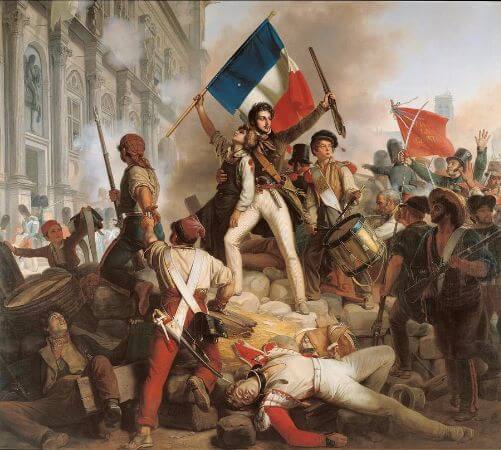
Side by side of the edited and original versions of Jean Victor Schnetz' Fighting At The Hotel De Ville (1830)
#French Kiss: Tale of the Revolution#final chapter#Chapter 20: Happy Endings#dukeceit#ts virgil#Virgil Gamin#ts remus#ts patton#ts janus#ts roman#Crown Prince Remus Capetian#Patton Cœur#Prince Roman Capetian#Janus Robespierre#demus#one-sided logicality#ambiguous ending#sanders sides fanfiction
22 notes
·
View notes
Text
The most beautiful old cafes in the world


It's hard to believe, but some cafes have existed for several centuries. Just imagine that you can go for a coffee and you will be surrounded by objects that are already 200, or even 300 years old. And how many stories such establishments keep! In this article, we'll highlight 30 old retro cafes you might want to visit on your next trip.
Cafe Chris, Amsterdam
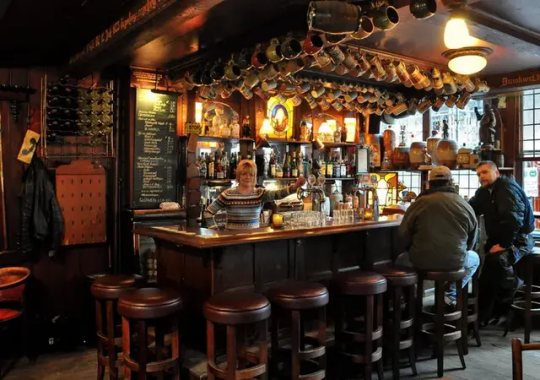
Location: Bloemstraat 42, 1015 TB Amsterdam, Netherlands Cafe Chris is the oldest establishment in Amsterdam, founded in 1624 in the Jordaan district. Due to its dark interior, it is also called “Brown Cafe”. Once upon a time, workers who were building the Westerkerk bell tower came here for wages. The cafe still has old floorboards, backlit windows, and dark wood paneling.
Gran Caffe Quadri, Venice

Location: Piazza San Marco, 121, 30124 Venezia VE, Italy The establishment opened its doors in 1638 - then it was called Il Rimedio. Malvasia wine was served here and was said to “invigorate the body and awaken the mind.” In 1775, merchant Giorgio Quadri and his wife Naxina, who arrived from Corfu, decided to invest in this cafe. This is how the history of Gran Caffe Quadri began. In 1830, management passed to the Vaerini brothers, who expanded the establishment by one more floor. In 2011, the Alaimo family bought the cafe. In 2018, Gran Caffe Quadri underwent a major renovation. The famous French creative and designer Philippe Starck was invited to transform it.
Cafe Procope, Paris
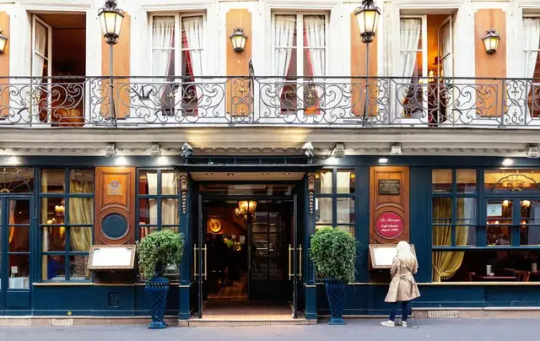
Location: 13 Rue de l'Ancienne Comédie, 75006 Paris, France Café Procope is the first literary café in Paris. It was discovered in 1686 by Sicilian immigrant Francesco Procopio dei Coltelli - after whom it took its name. Following the traditions of the Procopio family, who ran the establishment for many years, the cafe serves sorbet and granita (crushed ice), the forerunners of ice cream. King Louis XIV appointed Café Procope as the exclusive producer of sorbets. Its famous visitors include Napoleon, Honoré de Balzac, Paul Verlaine, Victor Hugo and Voltaire.
Cafe Tomaselli, Salzburg
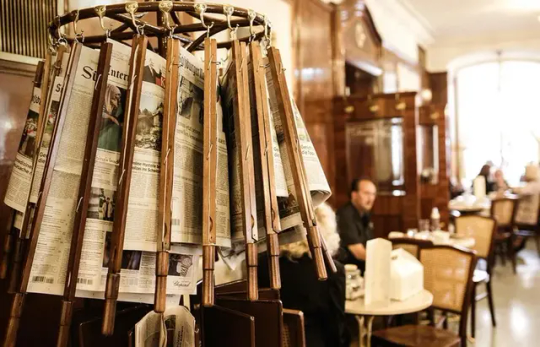
Location: Alter Markt 9, 5020 Salzburg, Austria In the center of Salzburg, on the Alter Markt square, there is the Tomaselli cafe, perhaps one of the most famous in the world. Family-owned for centuries, this restaurant embodies stylish Austrian coffee culture. The first cafe was opened here in 1703, and in 1852 it was bought by Karl Tomaselli. Mozart and his wife Constance, playwright Hugo von Hofmannsthal, and composer Carl Weber loved to visit it. Cafe Tomaselli recommends trying the Einspänner (double espresso with cold whipped cream) and Melange (an espresso-based coffee drink with the addition of heated and frothed milk and whipped cream).
Caffe Florian, Venice
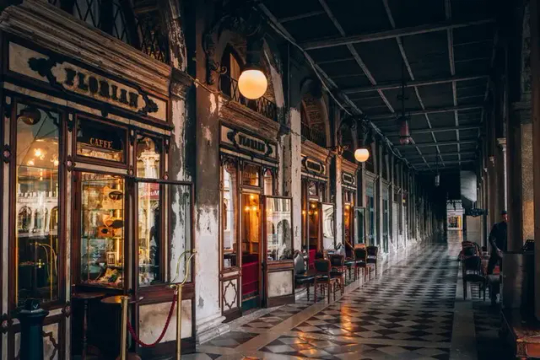
Location: Piazza San Marco, 57, 30124 Venezia VE, Italy Caffe Florian is one of the first cafes in what is now Italy. It was opened in 1720 under the name Alla Venezia Trionfante. The establishment gained popularity due to the fact that both men and women could visit it - in those years this was very rare. Over time, the cafe began to be called Florian - in honor of the owner Floriani Francesconi. In 1760, the sales point for Venice's first newspaper, Gazzetta Veneta, was opened here. At different times, the cafe was visited by Jean-Jacques Rousseau, Johann Goethe, Charles Dickens, George Byron, Giacomo Casanova, Ernest Hemingway and others. Today, Caffe Florian offers more than 30 varieties of coffee drinks, many desserts, salads and light snacks.
Antico Caffe Greco, Rome
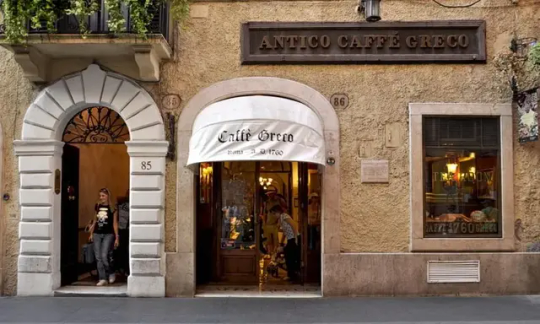
Location: Via dei Condotti, 86, 00187 Roma RM, Italy Antico Caffè Greco is a historical café in Rome, opened in 1760. Its founder is the Greek Nicola della Maddalena. Over the centuries, the elegant Caffè Greco has been visited by Hans Christian Andersen, George Byron, Henrik Ibsen, John Keats, Mark Twain and others. Some 300 paintings, memorabilia and vintage photographs of famous clients adorn the walls of this establishment. And gilded mirrors and a piano help maintain an authentic atmosphere.
Caffè Al Bicerin, Turin
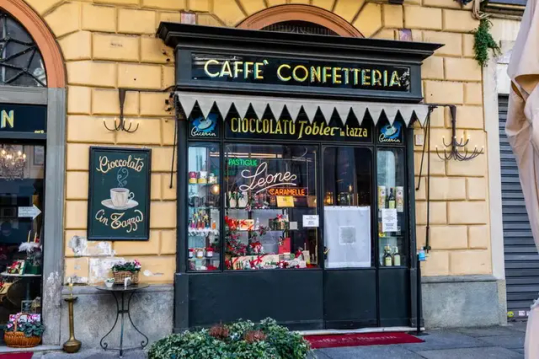
Location: Piazza della Consolata, 5, 10122 Torino TO, Italy The history of the establishment began in 1763, when Giuseppe Dentis opened his small shop in the premises opposite the entrance to the Santuario della Consolata Cathedral. In 1856, the current building was built here according to the design of the architect Carlo Promis. And then the cafe acquired a more elegant form, which we can appreciate today - its walls were decorated with wooden panels, mirrors and lamps. It now has round white marble tables, a counter, and shelves. This establishment was the birthplace of the famous Turin drink Bicerin - a mixture of coffee, chocolate, milk and syrup. Even Alexandre Dumas mentioned it in one of his novels.
El Fishawy, Cairo

Location: El-Gamaleya, El Gamaliya, Cairo Governorate, Egypt El Fishawy Café is hidden in the heart of Khan Al Khalili Souk. Its doors opened to visitors in 1773. The first owner of the establishment served Turkish coffee to his friends after sunset. There were more and more people wanting to enjoy a cup of aromatic drink and discuss city news. And then the owner bought buildings nearby, added even more items and hookah to the menu. The current owners of El Fishawy, heirs of the founder, are trying to preserve the traditions and atmosphere of the establishment.
Cafe Tortoni, Buenos Aires, 1858

Location: Av. de Mayo 825, C1084 Buenos Aires, Argentina Cafe Tortoni is considered the oldest in Argentina. It was opened by an emigrant from France in 1858 and named after the café of the same name in Paris. It is worth noting that the first premises of Cafe Tortoni were located on Avenida Rivadavia. The cafe moved to its current location in 1880. The owners have maintained the same style of the establishment throughout all the years of its existence. There is a tango room, as well as tables for playing billiards, dominoes and dice. His most famous guests were Garcia Lorca, Jorge Luis Borges, Carlos Gardel, Hillary Clinton, Albert Einstein, Robert Duvall.
Café Gerbeaud, Budapest
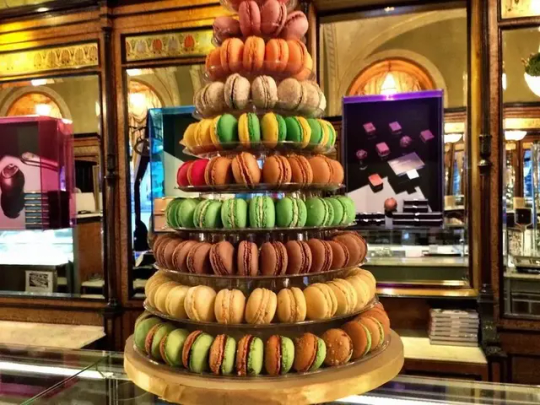
Location: Budapest, Vörösmarty tér 7-8, 1051 Hungary Café Gerbeaud is the most famous cafe in Europe, whose history began in 1858. Its founder is Henrik Kugler, a representative of the third generation of a dynasty of confectioners. He became the first to offer customers slices of his signature Coogler cake to-go in cardboard boxes. During a visit to Paris in 1882, Henrik Kugler met Emil Gerbaud - they soon became business partners. And later, a French confectioner entrepreneur bought the cafe completely. With the advent of Gerbeau, many changes took place in the confectionery - the menu expanded, the equipment changed, and the staff increased. Café Gerbeaud became a favorite place not only among city residents, but also among city guests, since the prices here were affordable for absolutely everyone. After Emile Gerbeau's death in 1919, his wife ran the confectionery. From 1950 to 1984 the cafe was nationalized and was called Vörösmarty. In 1995, Café Gerbeaud was bought by German entrepreneur Erwin Franz Müller. The establishment was renovated and restored to its historical appearance.
Gran Caffè Gambrinus, Naples, Italy
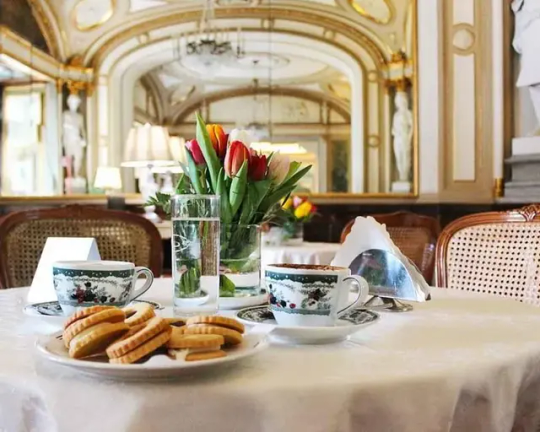
Location: Via Chiaia, 1/2, 80132 Napoli NA, Italy The legendary coffee shop is located in the center of Naples. The establishment was founded by Vincenzo Apuzzo in 1860 - his dream was to create the best cafe in Italy. The next owner was Mario Vacca in 1889. By that time, the premises were already in need of reconstruction. The owner of the cafe invited an architect and artists who worked on updating the interior. Their paintings and sculptures adorn Caffè Gambrinus to this day. The establishment was once visited by Matilda Serao, Ernest Hemingway, Oscar Wilde, Guy de Maupassant, Princess Sissi, and Emile Zola. By the way, the tradition of caffé sospeso was born here - paying for coffee for the next customer.
Cafe de la Paix, Paris
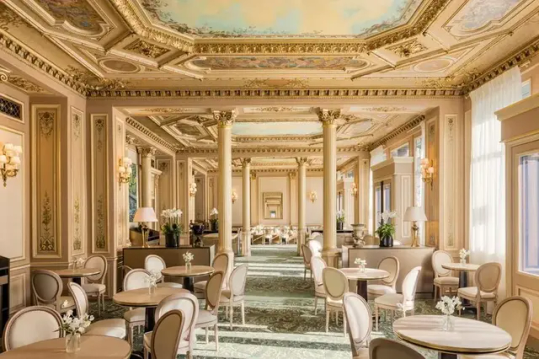
Where is it: 5 Pl. de l'Opéra, 75009 Paris, France Café de la Paix is located in the 9th arrondissement of Paris, at the intersection of Boulevard des Capucines and Place de l'Opéra, in the building of the Le Grand Hotel. The hotel and cafe were opened in 1862 with the financial support of the Pereire brothers. The Café de la Paix gained its first international reputation in 1867, serving the International Exhibition. The establishment, located next to the Opera Garnier, attracted many famous personalities. Pyotr Tchaikovsky, Jules Massenet, the Prince of Wales and Edward VII visited here. In 1896, Eugene Piroux held film screenings at the Café de la Paix, and later a radio studio was organized there. Just like 150 years ago, today the restaurant is also very popular. Salads, hot dishes, snacks and desserts are served here.
Café du Monde, New Orleans
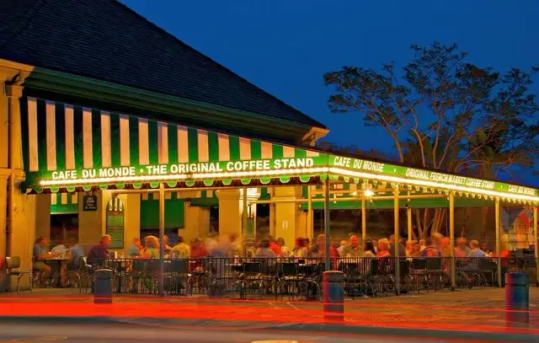
Location: 800 Decatur St, New Orleans, LA 70116, USA Café du Monde is a true New Orleans landmark. The establishment has been in business since 1862 and always serves dark roasted chicory coffee, milk (regular or chocolate), fresh orange juice, hot chocolate and French donuts (beignets).
Cafe Landtmann, Vienna
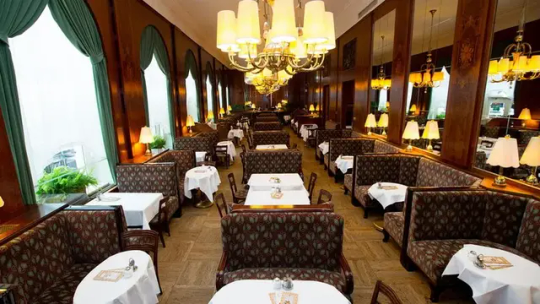
Location: Universitätsring 4, 1010 Wien, Austria Café Landtmann is the oldest in Vienna. Guests began to be received here on October 1, 1873. Franz Landtmann dreamed of opening not just a coffee shop, but the most elegant place in Vienna. And he did everything for this - visitors were delighted with the innovative spirit of the establishment. Years passed, the owners changed, but this place was always popular among citizens and guests of the capital. In the 1970s, Cafe Landtmann was threatened with closure, but thanks to the efforts of the new owners, it was saved.
Baratti & Milano, Turin
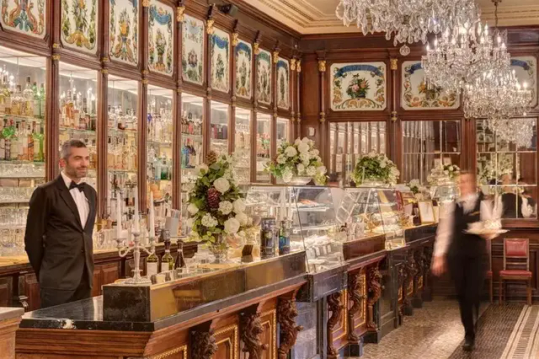
Location: Piazza Castello, 27, 10123 Torino TO, Italy Caffè Baratti & Milano is a historic café in Turin, opened in 1875 in the central Galleria Subalpina. The establishment owes its name to two pastry chefs from Canavese: Ferdinando Baratti and Edoardo Milano. Soon after its opening, Caffè Baratti & Milano became a meeting place for the intelligentsia and the bourgeoisie. Its success has grown to the level of "official supplier of the Royal House". The current appearance of the restaurant is the result of reconstruction in 1909. The room has a lot of marble, bronze, stucco, gilding and wide mirrors, which give this place a rich artistic appearance. The cafe was damaged during the Second World War, but was restored in 1948. Caffè Baratti & Milano offers its visitors more than 20 types of coffee drinks, tea, light snacks, pastries and sweets.
Cafe Central, Vienna

Location: Herrengasse 14, 1010 Wien, Austria The Central coffee shop is the most popular place in Vienna and is included in all must-see lists in this city. There are always long queues here - people come here to drink delicious coffee, eat strudel, listen to live music and just enjoy the atmosphere. Cafe Central was founded by the Pakhi brothers in 1876. Over time, the establishment became a popular place where cultural representatives loved to come. His regular guests were Egon Friedel, Peter Altenberg, Adolf Loos, Alfred Adler, Leon Trotsky and others. After World War II, Cafe Central closed. In 1975, the Ferstel Palace, where the establishment was located, was completely renovated. After this, the cafe reopened its doors to visitors.
Cafe Sacher Wien, Vienna
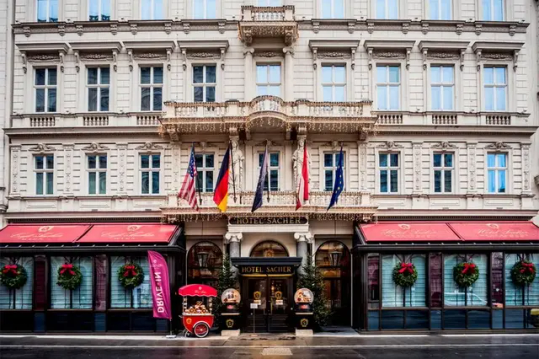
Location: Philharmoniker Str. 4, 1010 Wien, Austria Another must-visit place in Vienna is the famous Sacher Wien café. After all, this is where they serve Sachertorte, made according to the classic recipe. In 1876, the Sacher family opened a hotel next to the Vienna Opera, which operated a café. It became a place where it was customary to have dinner before attending the opera - writers, artists and high-ranking officials met here. Today, Cafe Sacher Wien is still very popular, as evidenced by the long queues.
Les Deux Magots, Paris
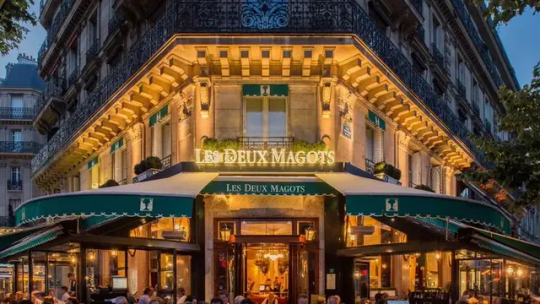
Where is it: 6 Pl. Saint-Germain des Pres, 75006 Paris, France Les Deux Magots is a famous Parisian cafe located in the luxurious Saint-Germain-des-Prés quarter. It opened its doors to visitors in 1884. Originally a novelty store was located here, later coffee liqueurs were sold on this site. By 1914, the company was on the verge of bankruptcy, and was bought by Auguste Boulet for his cafe. His heirs still manage the establishment to this day. Since then, Les Deux Magots has played an important role in the cultural life of the capital - writers, poets, artists and other intellectuals gathered here. Among the guests in the cafe one could meet Pablo Picasso, Bertolt Brecht, Albert Camus. The establishment has been described more than once in literary works and shown in films.
Cafe de Flore, Paris
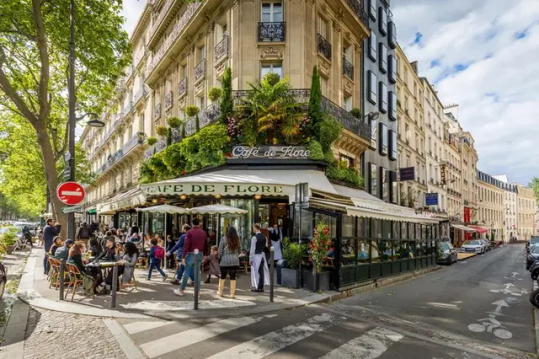
Location: 172 Bd Saint-Germain, 75006 Paris, France Cafe de Flore was opened in 1887 in the 6th arrondissement of Paris, on the corner of Boulevard Saint-Germain and Rue Saint-Benoît. The interior of the establishment, in the classic Art Deco style, has remained virtually unchanged since World War II. Since its opening, intellectual audiences have met here. Among the famous guests at Cafe de Flore were Robert Desnos, Pablo Picasso, Georges Bataille. By the way, Charles Maurras wrote his book Au signe de Flore while sitting on the first floor of the cafe. The restaurant's menu includes breakfasts, salads, cheeses, hot dishes, drinks and desserts.
Cafe Comercial, Madrid

Location: Glorieta de Bilbao, 7, 28004 Madrid, Spain Café Comercial is located in the Glorieta de Bilbao square. It was founded by Antonio Gomez Fernandez in 1887. Read the full article
3 notes
·
View notes
Text

.
Thursday Throw Back… way way back - The Oldest… Cafe in Paris.
Le Procope opened in 1686
Established in 1686 by an Italian chef named Francesco Procopio dei Coltelli, Le Procope or Café Procope is considered the oldest café in Paris – it is also widely called the oldest continuously operating restaurant in the city. Many people also believe that Le Procope was the first ever European coffeehouse and that it birthed coffeehouse culture as we know it. Coltelli served Italian sorbets as well as the newly discovered coffee and Le Procope a hot spot for artists, intellectuals, actors, and other distinguished people after the Ancienne Comédie Française theatre opened nearby.
In its early days, many great French writers such as Jean-Jacques Rousseau, Voltaire, and Denis Diderot often spent time at Le Procope. Voltaire’s loved Le Procope so much that his favorite table has been preserved and now serves as a shrine to the author. Le Procope became so prolific that famous thinkers and writers from around the world also stopped by, including Thomas Jefferson and Benjamin Franklin. In the late 1980s, Le Procope was renovated to mimic 18th century designs and now serves a full menu.
4 notes
·
View notes
Text

18 hechos sobre París:
1. El Metro de París tiene varias "estaciones fantasmas" que ya no están en uso. Uno de los más famosos es el Arsenal, que fue cerrado en 1939.
2. El apartamento de Gustave Eiffel en la parte superior de la Torre Eiffel todavía existe. Ahora es un museo, mostrando cómo se veía cuando vivía allí.
3. Montmartre, conocido por su historia artística, tiene un viñedo oculto llamado Clos Montmartre que todavía produce vino.
4. La Ópera del Palais Garnier tiene un apartamento oculto diseñado para el arquitecto del edificio, Charles Garnier.
5. La casa más antigua de París se encuentra en la calle de Montmorency 51 y data de 1407. Perteneció al alquimista Nicolas Flamel.
6. La calle más corta de París, Rue des Degrés, tiene sólo 5,75 metros de largo y consiste únicamente en una escalera.
7. La Opera Garnier tiene un lago subterráneo, originalmente una fuente de agua natural que se convirtió en parte de su infraestructura.
8. Durante la liberación de París en 1944, la contraseña secreta era "Tante Sally. "
9. La Rue des Morts en el 5.o distrito fue una vez una calle donde personas con rostros desfigurados debido a lesiones de la Primera Guerra Mundial vivían y recibieron tratamiento.
10. La Campagne à París en el distrito 20 es un pequeño pueblo escondido dentro de la ciudad, con casas y jardines pintorescos.
11. El Tour Jean-sans-Peur, una torre medieval construida a principios del siglo XV, está escondida en el 2.o distrito.
12. Candelaria, un bar estilo bar clandestino, está escondido detrás de una tienda de tacos en Le Marais.
13. Le Procope, fundado en 1686, es el café más antiguo de París y fue frecuentado por Voltaire, Rousseau y Benjamin Franklin.
14. El Canal Saint-Martin estaba cubierto parcialmente a mediados del siglo XIX, y hoy en día, partes del mismo corren bajo tierra.
15. En el Arco del Triunfo hay un ascensor escondido dentro de uno de los pilares para los que no pueden o no quieren subir las escaleras.
16. El Pont des Arts fue usado una vez como un puente de peaje, donde los artistas montaban sus caballetes y pintaban las vistas del río.
17. Place de la Concorde, ahora una famosa plaza, fue una vez el lugar de muchas ejecuciones públicas durante la Revolución Francesa.
18. El río Bièvre, una vez una vía fluvial prominente en París, ahora fluye completamente bajo tierra a través de la ciudad.
4 notes
·
View notes
Text
0 notes
Text
A deliciosa História da França – Stéphane Hénaut e Jeni Mitchell

Parece redundância, mas realmente é um livro gostoso de ler! Vai contando a história da França e a relacionando com o que se comia, como se prepara, de onde vem os pratos já tão conhecidos como parte da culinária francesa.
“O croissant talvez seja um dos alimentos mais icônicos da França de todos os tempos, mas, ainda que esteja bem estabelecido nessa posição, suas origens não são, de modo algum, inteiramente francesas. Seu ancestral mais provável é o kipfel, m pãozinho em forma de meia-lua confeccionado na Áustria. Segundo uma lenda bastante “viajada”, o primeiro capítulo de sua jornada para a fama começou em 1683, durante o cerco otomano a Viena. Os madrugadores padeiros vienenses frustraram uma tentativa de invasão otomona por um túnel escavado sob as muralhas da cidade, permitindo que seus defensores aguentassem até que o rei polonês Jan Sobieski chegasse para repelir os invasores. Para celebrar seu papel no salvamento da cidade, os padeiros criaram um pãozinho em forma de meia-lua, uma referência escarnecedora a um dos símbolos mais característicos dos derrotados otomanos.”
“.. Contudo, é provável que a mais deliciosa razão para visitar Bayonne torne-se mais evidente a cada ano, durantes as Festividades da Ascensão, quando a cidade celebra Les Jornées du Chocolat ( Os Dias do Chocolate). Isso acontece porque Bayonne [e a cidade natal de uma das mais antigas tradições da produção artesanal de chocolate de toda a Europa; por isso, atualmente atrai multidões de “chocólatras” em peregrinação...”
“Os cafés floresceram durante o Iluminismo, proporcionando um espaço de convivência para escritores, artistas e intelectuais de todos os ramos de atividade, par que trocassem ideias e desfrutassem do vibrante espírito da época em Paris. Voltaire alimentava sua impressionante dependência de cafeína no Café Procope, tendo sido famoso por beber diariamente várias dúzias de xícaras de café misturado com chocolate,,, Por volta de 1780 havia centenas de cafés em Paris... Originalmente estabelecidos como meras cafeterias, os cafés começaram a servir vinho e porções de comida também, tal como fazem até hoje.”
1 note
·
View note
Text


Plaque en hommage à : Pierre Trimouillat
Type : Lieu de résidence
Adresse : 10 rue Chanoinesse, 75004 Paris, France
Date de pose : Inconnue
Texte : Pierre Trimouillat, chansonnier-humoriste, né en 1858 à Moulins, habita cette maison de 1890 à 1929
Quelques précisions : Pierre Trimouillat (1858-1929) est un humoriste français. Il se produit dans différents établissements, notamment le Café Procope, un des plus célèbres cafés-restaurants de Paris. Il se distingue par sa voix fluette qui participe énormément aux rires de son public, et fut surnommé le "Baron du rire" par le propriétaire du cabaret du Chat noir, à Montmartre.
0 notes
Text
咖啡简史
咖啡不仅仅是一种饮料,它还是现代工作文化和消费主义的一个缩影。自 9 世纪埃塞俄比亚牧羊人到 18 世纪巴黎革命哲学家,再到当今的咖啡爱好者,咖啡已经融入我们的生活。不断变化的咖啡偏好一直是现代工作文化和消费主义的关键因素。
“……山羊们四处奔跑,互相顶撞,用后腿跳舞,兴奋地咩咩叫着。男孩惊奇地张着嘴盯着它们。他想,它们一定是着了魔了……”
“首先,他嚼了几片叶子。它们尝起来很苦。然而,当他咀嚼时,他感到一股轻微的刺痛感,从舌尖一直蔓延到腹中,然后扩散到全身……据传说,卡尔迪很快也和他的山羊一起蹦蹦跳跳起来。他口若悬河,诗歌和歌曲脱口而出。他觉得自己永远不会疲倦了。”
在 15 世纪,世界上大部分地区还没有品尝过咖啡的奇妙滋味。唯一享受这种神奇豆子的,只有埃塞俄比亚的僧侣,他们得到了放羊牧人兼诗人卡尔迪的指点。
到了 16 世纪,咖啡已经遍布阿拉伯半岛和整个奥斯曼帝国。大约在 1573 年,威尼斯人开始将其进口到欧洲。到 17 世纪,咖啡馆在巴黎、伦敦和维也纳如雨后春笋般涌现,欧洲人也开始变得活跃起来。
咖啡馆:从奢侈品到大众消费品
与所有奢侈品一样,咖啡连同可可、烟草、糖和茶,最初仅供消费得起这些商品的精英阶层享用。但随着 18 世纪与美洲贸易的蓬勃发展,咖啡的供应增加,价格下降。咖啡不再是欧洲最富裕居民的专属品,现在中产阶级甚至下层阶级也能买得起。
“法国的咖啡消费量增加了三倍;每家布尔乔亚家庭……早上都会喝牛奶咖啡。在首都的公共市场和某些街道和小巷,妇女们开始摆摊,向民众出售她们所谓的 café au lait”——18 世纪一位法国人的话(引自 Zwart 和 Zanden,第 249 页)。
这种负担得起的后果最著名的就是咖啡馆的兴起——咖啡因激发的思想家们社交、辩论和开展商业活动的空间。
到 18 世纪,仅巴黎就有大约 700 家咖啡馆。其中最著名的一家是 1686 年成立的 Café de Procope,伏尔泰、卢梭,后来的罗伯斯庇尔和马拉都曾在这里一边品尝咖啡,一边就他们的革命思想展开哲学探讨。法国大革命和启蒙运动是在过度兴奋的法国思想家的思想中酝酿的。
在英国,被称为“便士大学”的咖啡馆成为颇具影响力的中心,来自所有社会阶层的思想家可以在那里自由地分享自己的��法。如此自由以至于查理二世国王试图在 1675 年禁止“便士大学”。狂热喝咖啡的人起来反抗,禁令只维持了 11 天。
“咖啡馆... 产生了非常邪恶和危险的影响;... 散布和传播各种虚假、恶意和诽谤性的报道,以诽谤陛下的政府,扰乱国家的和平与安宁……”——查理二世,11 天的咖啡馆敌人。
像任何革命性的消费品一样,咖啡最初是只有精英阶层才能享用的奢侈品。然后大众开始渴望它。需求增加,供应增加,价格下降。咖啡成为家庭中必不可少的饮品,而咖啡馆成为革命思想的有力中心。强大的力量以至于连国王都无法阻止。
勤奋革命:醒醒、欲望更多、更加努力
当他们拼命喝着咖啡时,欧洲人也渴望中国瓷器、亚洲布料、更多糖、茶和烟草等奢侈品。这场“消费革命”带来了更多的贸易、更多的商店、更多的专业化、更多的就业机会和经济增长。
人们更加努力地工作以负担得起这些新的异国奢侈品。当时的一位工匠观察到,“[对新奢侈品的渴望] 让人们愿意工作,而没有其他东西会让他们愿意这么做;因为如果人们满足于基本必需品,我们就会拥有一个纯洁的世界”(Zwart 和 Zanden,第 252 页)。历史学家扬·德·弗里斯将这一时期称为“勤奋革命”3,这是一场需求主导的革命,早于工业革命。
在 15 世纪,英国农场工人每年工作 165 天;到 18 世纪后期,这一数字增加到 260 天。不仅男性工作时间更长,而且儿童和女性也把时间从家务转移到了市场工作上。
“我喝咖啡,这样我就能工作更长时间,这样我就能赚更多钱,这样我就能喝更多的咖啡”——托斯丹·凡勃伦,“有闲阶级论”,1899 年4
一种理论认为,工作时间增加是因为 18 世纪后半期实际工资下降,迫使工人在维持生活水平的情况下工作更长时间。
然而,2011 年的两名研究人员使用各种定量技术对这一概念提出了质疑,并表明咖啡、糖和茶的进口对早期现代欧洲人的生活水平产生了重大的积极影响。他们认为,获取更广泛的商品极大地改善了人们的生活:“[在英国] 引入含咖啡因的热饮和糖大大促进了第一个工业化国家人民的福利”(赫什和沃思,第 35 页)5。 现代消费主义的缩影
如今,咖啡仍然是消费文化的理想缩影,它不断地自我销售和自我改造。第一波文化、第二波、第三波、第四波。香料南瓜烤白巧克力摩卡。Ariana Grande 星冰乐。防弹咖啡。猴子便便咖啡。
标志性的咖啡连锁店星巴克价值 900 亿美元(高于 Shopify、Palantir 和 Stripe)。当雀巢收购 68% 的股份时,蓝瓶咖啡的估值达到 7 亿美元。Blank Street 筹集了超过 1000 万美元。像任何强大的消费品一样,咖啡不仅满足我们的生物需求,还满足我们的社会和地位需求……在纽约市的 Ralph's Coffee 坐一坐,进行一下这个现象的人类学实地观察。
咖啡让埃塞俄比亚的山羊变得活跃,激励了哲学家反抗,并驱使 18 世纪的人们更加努力地工作和消费更多。它一直是,并且仍然是最强大的消费品之一。无论你用一杯意式浓缩或一杯 Ariana Grande 星冰乐开始你的早晨,你都在延续着支撑现代工作文化和消费主义的传统。现在你知道了这段历史,我希望你的早晨咖啡尝起来更加美味。它对我来说当然是这样。
本文译自 thezerostate,由 BALI 编辑发布。
0 notes